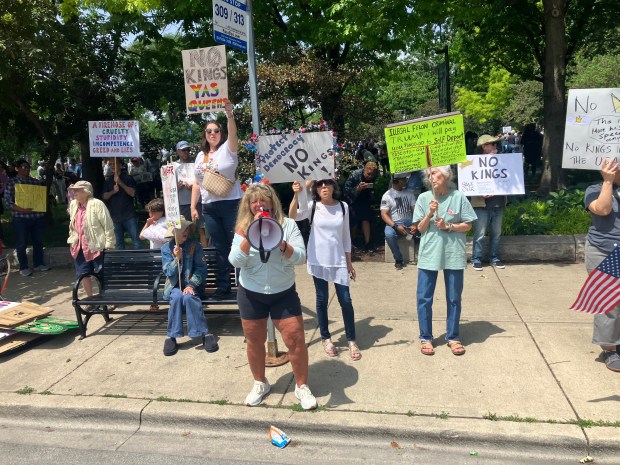After years of efforts by preservationists, the federal government has decided to spare a pair of century-old Loop skyscrapers from the wrecking ball in favor of adaptive reuse.
The vacant Century and Consumers buildings in the 200 block of South State Street, the last vestiges of the Chicago School of Architecture, will not be demolished as planned, according to the General Services Administration, which manages the government-owned buildings.
In its final environmental impact statement, released last week, the GSA recommended the federal government lease the buildings for redevelopment, but with a lengthy list of restrictions on the use to protect security at the adjacent Dirksen U.S. Courthouse.
“It’s huge,” said Ward Miller, executive director of Preservation Chicago. ”We are really grateful to the GSA and the federal officials …for considering other options than demolition for these two really important buildings.”
The GSA’s 15 restrictions ostensibly prohibit everything from residential use to sight lines into the Dirksen Courthouse, but leave the door open to exceptions for proposals “that demonstrate the financial capability” of the developer to “successfully execute,” according to the statement.
The government acquired the buildings in 2007 as a buffer and potential office expansion for the courthouse. But in 2022, legislators approved $52 million to tear down the buildings after a proposal for a $141 million mixed-used redevelopment was shot down over security concerns raised by neighboring federal judges.
“This could have set a dangerous precedent across the nation for any structure that was too close to a federal courthouse or any federal building that the GSA could have taken it under eminent domain and demolished it,” Miller said.
The early skyscrapers have topped Preservation Chicago’s annual list of the city’s seven most endangered buildings for three years running.
Completed in 1915, the 16-story Century Building at 202 S. State St. was designed by Holabird & Roche, a pioneering Chicago architecture firm that built a number of prominent commercial high-rises. The 22-story Consumers Building at 220 S. State St. was completed in 1913 and designed by Jenney, Mundie & Jensen. Lead architect William Le Baron Jenney is credited as building the first modern skyscraper, the nearby Home Insurance Building, in 1885.
The steel-framed terra cotta buildings are in the Loop Retail Historic District listed in the National Register of Historic Places, and are under consideration for Chicago landmark protection.
Preservation Chicago has been pushing for an adaptive reuse of the buildings as a collaborative national archives center, but remains open to other alternatives that restore and preserve the historic skyscrapers.
“I think this could be a mixed-use development with an archive center as part of it,” Miller said. “It could be an archive center exclusively. There may be some possibilities for residential, which would normally be the most logical solution if we didn’t have the Dirksen Federal Center directly behind and if we didn’t have these 15 requirements.”
The GSA, which manages government-owned buildings, held a series of public meetings to solicit input and determine the fate of the decaying Century and Consumers buildings. At the same time, it began some demolition in and around the site.
In April 2023, the GSA tore down a vacant three-story building sandwiched between the Century and Consumers buildings, using $3.2 million of the allocated demolition funds. It also removed the exterior fire escape from the Century building last fall.
But local advocacy groups have rallied national and international support for preserving the buildings. In June, Sara Bronin, chair of the federal Advisory Council on Historic Preservation, wrote an op-ed in the Tribune imploring “we cannot let these buildings fall” as planned.
“It troubles me to think that in Chicago, the very city that invented the skyscraper, the best that government can offer is to tear it all down,” Bronin wrote.
Miller said Bronin’s influential opinion came out at a “critical time” in the GSA review process, perhaps turning the tide in favor of preservation of the Century and Consumers buildings.
Last year, the buildings received a final landmark recommendation from the Commission on Chicago Landmarks, but have yet to get the full designation from the City Council. That may not be necessary to save them in the wake of the GSA’s finding in favor of adaptive reuse.
The GSA will publish a record of decision within 30 days, concluding the environmental review process and formally issuing what amounts to a long-sought reprieve for the historic buildings.
Miller said there’s still work to do, including finding an adaptive reuse that attracts developers while protecting the security of the courthouse. No less important will be preserving the structures, which continue to deteriorate after nearly two decades of federal ownership.
“We’re hoping the remaining $45 million of this demolition earmark could be invested in the terra cotta and the exterior cladding and roof structures, along with the windows,” Miller said. “I think at a minimum, the GSA and federal government could help with restoring some of these features of the exterior that have languished for so long, almost 20 years, under their ownership.”
rchannick@chicagotribune.com




